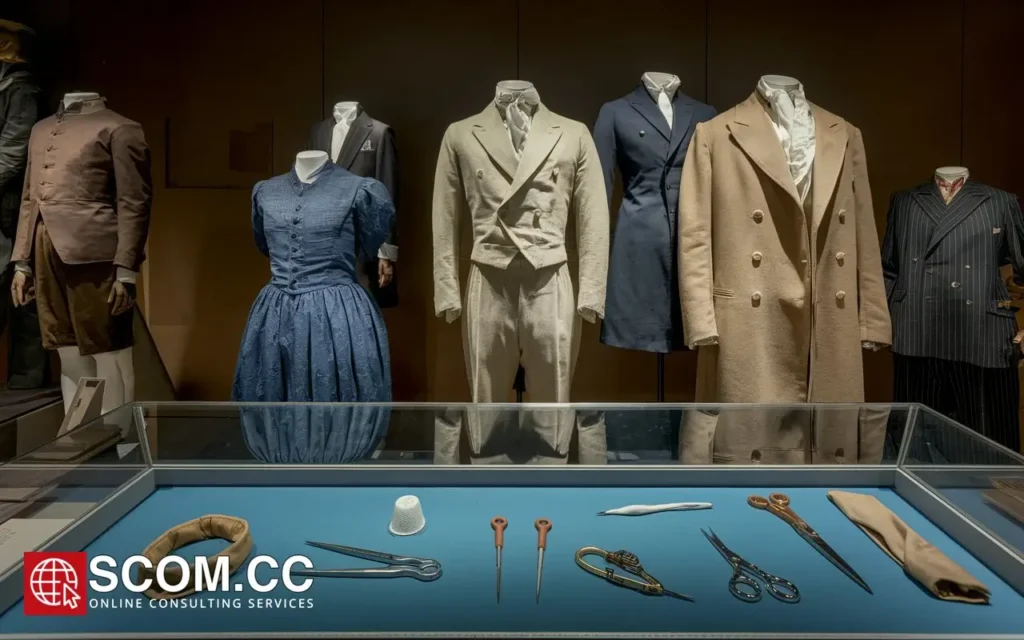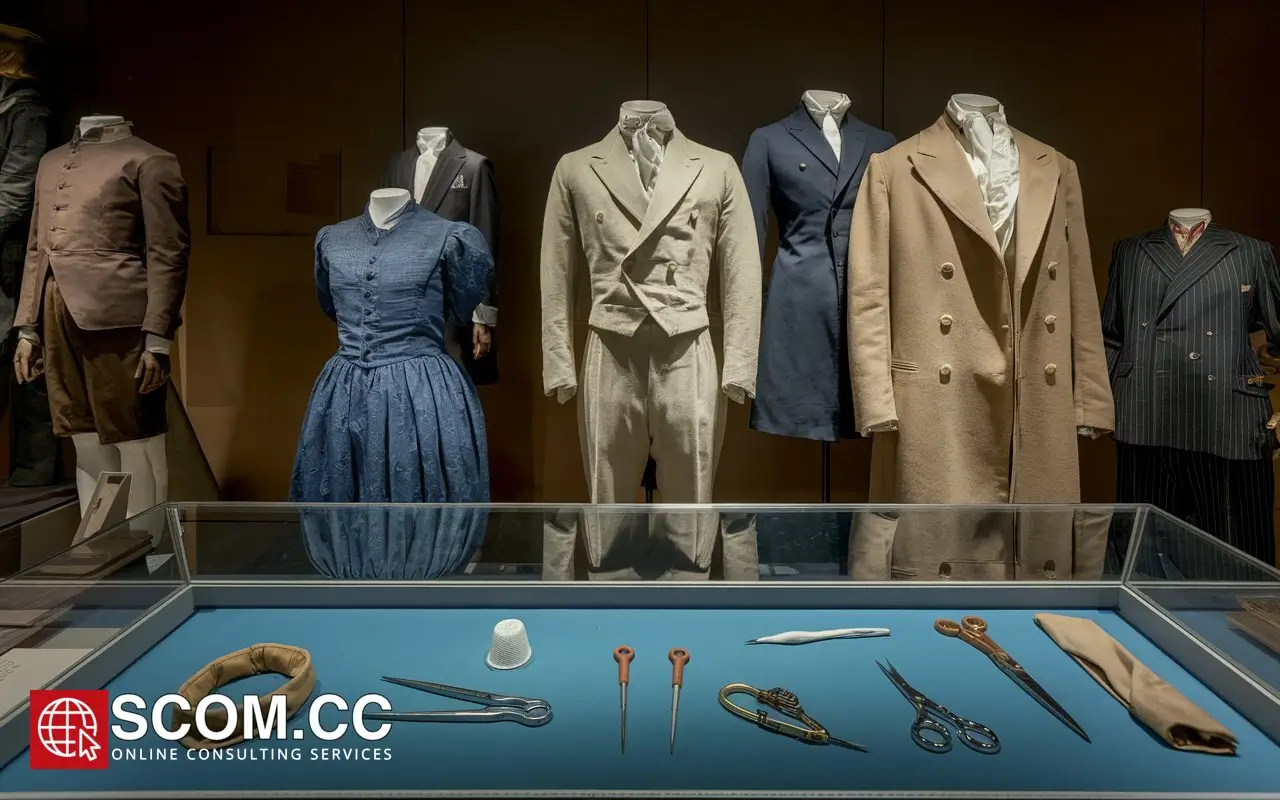What Are the Most Influential Tailoring Schools and Institutions in History?

- What Are the Most Influential Tailoring Schools and Institutions in History?
- The Savile Row Tradition: London’s Premier Tailoring Hub
- École de la Chambre Syndicale de la Couture Parisienne: The Heart of French Fashion
- The Italian School: Scuola di Sartoria Italiana and Neapolitan Tailoring
- The Fashion Institute of Technology (FIT): Bridging Tradition and Innovation
- Bunka Fashion College: The Vanguard of Japanese Tailoring
- Central Saint Martins: The Creative Hub of Tailoring Innovation
- Conclusion: The Legacy of Tailoring Schools and Institutions
-
FAQ
- 1. What is the significance of Savile Row in the tailoring industry?
- 2. What makes the École de la Chambre Syndicale de la Couture Parisienne influential?
- 3. How does Scuola di Sartoria Italiana contribute to tailoring?
- 4. What role does the Fashion Institute of Technology (FIT) play in tailoring education?
- 5. How does Bunka Fashion College influence global tailoring?
- 6. What makes Central Saint Martins a key player in tailoring education?
- 7. How have these institutions shaped modern tailoring practices?
What Are the Most Influential Tailoring Schools and Institutions in History?
Introduction to Tailoring Schools and Their Impact
Tailoring, as a specialized craft, has a rich history of training and education that dates back centuries. The art of tailoring requires a blend of skill, precision, and creativity, which has been cultivated through various tailoring schools and institutions around the world. These schools have not only preserved traditional techniques but have also fostered innovation, shaping the future of the fashion industry. In this comprehensive article, we will explore the most influential tailoring schools and institutions in history, examining their contributions to the craft.
The Savile Row Tradition: London’s Premier Tailoring Hub
Savile Row: The Birthplace of Bespoke Tailoring
When discussing influential tailoring institutions, Savile Row in London stands out as a symbol of excellence in bespoke tailoring. Established in the late 18th century, Savile Row has been the epicenter of elite men's tailoring, producing garments for royalty, celebrities, and business tycoons alike.
Key Tailoring Houses:
- Henry Poole & Co.: Often regarded as the "founder of Savile Row," Henry Poole & Co. has been instrumental in shaping modern tailoring since 1806. Known for creating the dinner jacket or tuxedo, this house has set many tailoring standards.
- Gieves & Hawkes: Established in 1771, Gieves & Hawkes has a storied history of crafting uniforms and formal wear for the British military and royal family.
Training and Apprenticeship on Savile Row
Savile Row has traditionally followed the apprenticeship model, where young tailors are trained under the guidance of experienced masters. This hands-on approach ensures the transfer of skills and knowledge that define bespoke tailoring. Today, Savile Row continues to be a benchmark for tailoring education and craftsmanship.
École de la Chambre Syndicale de la Couture Parisienne: The Heart of French Fashion
French Haute Couture and Tailoring
Established in 1927, the École de la Chambre Syndicale de la Couture Parisienne in Paris is one of the most prestigious institutions for fashion and tailoring in the world. Known for its focus on haute couture, this school has trained some of the industry's most celebrated designers and tailors.
Notable Alumni: Many influential figures, such as Yves Saint Laurent and Valentino Garavani, have honed their skills at this institution. The school's emphasis on precision cutting, draping, and hand-sewing techniques has made it a leader in the tailoring world.
Curriculum and Influence
The school's curriculum combines traditional techniques with modern fashion education, allowing students to master the art of tailoring while pushing creative boundaries. The institution's influence extends beyond France, impacting fashion and tailoring practices globally.
The Italian School: Scuola di Sartoria Italiana and Neapolitan Tailoring
Italian Tailoring Excellence
Italy is renowned for its tailoring heritage, particularly in cities like Naples and Milan. The Scuola di Sartoria Italiana, located in Naples, is a leading institution that upholds the traditions of Italian tailoring.
Neapolitan Tailoring: Neapolitan tailoring is characterized by its soft construction, unstructured jackets, and lightweight fabrics. This style prioritizes comfort and elegance, setting it apart from the more structured English tailoring.
Educational Focus
The Scuola di Sartoria Italiana focuses on hands-on training and the development of individual style. Students learn to master the art of tailoring through practice and attention to detail, making this school a key player in preserving Italy’s sartorial legacy.
The Fashion Institute of Technology (FIT): Bridging Tradition and Innovation
American Tailoring and Design Education
Founded in 1944 in New York City, the Fashion Institute of Technology (FIT) is a leading institution that combines fashion design, business, and tailoring education. While not exclusively a tailoring school, FIT has significantly influenced the American tailoring landscape.
Notable Contributions: FIT has nurtured talents like Calvin Klein and Michael Kors, who have made substantial contributions to modern tailoring. The institution's focus on technical skills and innovation has made it a breeding ground for future fashion leaders.
Modern Tailoring Techniques
FIT’s curriculum blends traditional tailoring techniques with modern technology, preparing students for careers in both bespoke and ready-to-wear fashion. This integration of tradition and innovation ensures that FIT remains at the forefront of tailoring education.
Bunka Fashion College: The Vanguard of Japanese Tailoring
Japanese Influence on Global Tailoring
Located in Tokyo, Bunka Fashion College has been a major force in shaping Japanese tailoring and fashion. Established in 1923, Bunka gained international recognition in the 1960s when its graduates, such as Kenzo Takada and Yohji Yamamoto, made waves in Paris.
Fusion of Tradition and Avant-Garde: Bunka’s approach to tailoring emphasizes a fusion of traditional Japanese techniques with avant-garde design, leading to innovative and distinctive styles.
Educational Impact
Bunka Fashion College’s curriculum includes a strong focus on pattern making, draping, and garment construction, making it an essential institution for anyone looking to master the art of tailoring. The school's influence can be seen in the global fashion landscape, particularly in the realm of avant-garde and conceptual fashion.
Central Saint Martins: The Creative Hub of Tailoring Innovation
The British Influence on Contemporary Tailoring
Central Saint Martins (CSM) in London is one of the most prestigious fashion schools globally, renowned for fostering creativity and innovation. While not exclusively a tailoring institution, CSM has profoundly influenced the industry by producing some of the world’s most celebrated designers and tailors.
Famous Alumni: CSM has been the starting point for Alexander McQueen, Stella McCartney, and John Galliano—all of whom have made significant contributions to modern tailoring.
Cutting-Edge Tailoring Education
CSM’s approach to education emphasizes conceptual thinking and experimental design. This focus on creativity, combined with traditional tailoring skills, ensures that graduates are well-equipped to push the boundaries of fashion and tailoring.
Conclusion: The Legacy of Tailoring Schools and Institutions
The most influential tailoring schools and institutions have played a pivotal role in shaping the craft of tailoring throughout history. From the traditional bespoke houses of Savile Row to the avant-garde teachings of Bunka Fashion College, these institutions have left an indelible mark on the fashion industry. As the world of tailoring continues to evolve, these schools will undoubtedly remain at the forefront of education and innovation.
Summary of Influential Tailoring Schools and Institutions
| Institution | Location | Established | Notable Alumni | Focus and Impact |
|---|---|---|---|---|
| Savile Row | London, UK | Late 18th century | Henry Poole & Co., Gieves & Hawkes | Birthplace of bespoke tailoring; traditional apprenticeship model; benchmark in high-quality craftsmanship. |
| École de la Chambre Syndicale de la Couture Parisienne | Paris, France | 1927 | Yves Saint Laurent, Valentino Garavani | Emphasis on haute couture; combines traditional techniques with modern fashion education. |
| Scuola di Sartoria Italiana | Naples, Italy | 19th century | N/A | Preserves Neapolitan tailoring traditions; focuses on soft construction and elegant design. |
| Fashion Institute of Technology (FIT) | New York City, USA | 1944 | Calvin Klein, Michael Kors | Integrates fashion design, business, and tailoring education; emphasizes technical skills and innovation. |
| Bunka Fashion College | Tokyo, Japan | 1923 | Kenzo Takada, Yohji Yamamoto | Blends traditional Japanese techniques with avant-garde design; influences global fashion. |
| Central Saint Martins | London, UK | 1989 | Alexander McQueen, Stella McCartney | Focuses on creativity and experimental design; shapes modern tailoring through conceptual thinking. |
FAQ
1. What is the significance of Savile Row in the tailoring industry?
Savile Row is renowned as the birthplace of bespoke tailoring. Its tailoring houses, such as Henry Poole & Co. and Gieves & Hawkes, have set high standards for craftsmanship and personalized fit. The street's traditional apprenticeship model continues to influence high-quality tailoring practices.
2. What makes the École de la Chambre Syndicale de la Couture Parisienne influential?
The École de la Chambre Syndicale de la Couture Parisienne is highly influential due to its emphasis on haute couture. It has trained numerous prominent designers who have made significant contributions to fashion. The school integrates traditional tailoring techniques with modern design education.
3. How does Scuola di Sartoria Italiana contribute to tailoring?
Scuola di Sartoria Italiana in Naples is known for preserving Neapolitan tailoring traditions. The school focuses on soft, unstructured jackets and elegant, lightweight fabrics, maintaining the distinctive style of Italian tailoring.
4. What role does the Fashion Institute of Technology (FIT) play in tailoring education?
FIT in New York City is a leading institution that merges fashion design, business, and tailoring education. It emphasizes technical skills and innovation, preparing students for careers in both bespoke and ready-to-wear fashion.
5. How does Bunka Fashion College influence global tailoring?
Bunka Fashion College in Tokyo is known for its fusion of traditional Japanese techniques with avant-garde design. The college's approach has significantly impacted global fashion, particularly in conceptual and innovative tailoring.
6. What makes Central Saint Martins a key player in tailoring education?
Central Saint Martins is influential due to its focus on creativity and experimental design. The school nurtures future fashion leaders by blending traditional tailoring skills with avant-garde and conceptual approaches.
7. How have these institutions shaped modern tailoring practices?
These institutions have shaped modern tailoring by preserving traditional techniques while integrating innovation and creativity. Each has contributed to different aspects of tailoring, from bespoke craftsmanship and haute couture to avant-garde design and technical education.

To explore more about tailoring, visit our Blog of Tailoring. If you have any questions or need assistance, go to our contact page. Additionally, you can find more information about tailoring and consulting at this tailoring and consulting portal.

Leave a Reply